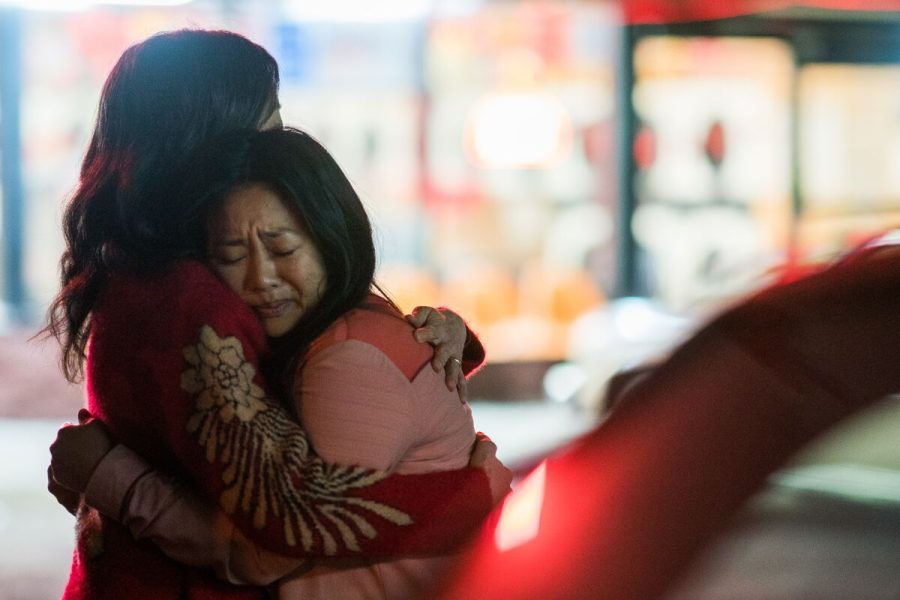Mother-Daughter immigrant relationships in film
Movies portraying the immigrant mother and daughter pair make their way into popular culture through films like “Everything Everywhere All At Once” and also through underground films like “Beba.“ Different relationship aspects illustrate it on the big screen while audiences can identify themselves with the characters. Allowing the representation of a complex relationship between an immigrant mother and daughter can change the dynamic positively by bringing difficult topics to light. Through the tension and heartwarming scenes, audiences can feel a sense of understanding and respect for both sides of the relationship.
February 9, 2023
Since the late ‘90s, a spike in films portraying the authentic immigrant mother-daughter experience finds its way into popular culture. The telling of real stories brings light to understanding these relationships. With inclusion in the United States National Film Registry and achieving Academy Awards, audiences now see their relatable stories gaining representation in the Hollywood industry.
The Joy Luck Club
“The Joy Luck Club”, based on the compelling novel by Amy Tan, illustrates the dynamic relationship between Chinese immigrant mothers and their American-born daughters. Formed by four women, the club becomes a place for them to share stories of their lives over the years. The movie begins with the death of one of the women and the club throws her daughter a farewell party as she decides to reunite with her long-lost sisters in China. The audience sees for the first time the Joy Luck club members with their daughters during the party scene. The film then sections itself into each story of the women and the relationship between their daughters. Scenes of the movie explore the narratives of each of the women and the backstories of their lives in China. As they raise their daughters in an Americanized world, audiences can see the clashing of cultural values and traditions that remains a theme first-generation immigrants face. Audiences view the cultural differences between the mothers and daughters and the difficulty to understand one another. As the mothers strive to build up their daughters in America, the expectations poured on their children cause a disconnect between them. As the heartwarming film follows the different pairs through their lives, it illustrates different dynamics between them and develops an understanding and respect for both sides.
Beba
Based on the filmmaker Rebeca Huntt, this movie paints her life on film by letting the audience in on her life. Huntt, born and raised in New York City reflects on her childhood experiences as an Afro-Latina with Dominican and Venezuelan ancestry. Composed of four chapters, she allows the audience to follow her as she delves into her own familial and personal storylines, showing a side of vulnerability. She provides vintage pictures of family members and interviews with family and friends to expand on their built-up trauma that relates back to her own but a spotlight finds itself on the relationship Huntt experiences with her mother. Scenes of tension between Huntt and her mother explore the raw relationship dynamic between the two not just in interviews but also in minimal interactions. Huntt explains the backstory of her mother through the lens of generational trauma and her mother’s ability to cope with her own trauma that affected her children. Through the grainy aesthetic cinematography and long scenic shots, she paints her unfiltered self-portrait that audiences can relate to as a first-generation immigrant, through the complex story of generational trauma and representing a real and raw relationship between a mother and her daughter.
“Seeing myself on screen I feel is a part of something bigger. It’s not necessarily seeing myself on screen that excites me at all, but getting to share this with the world when it’s taken so much time and so many beautiful collaborations. It was a vision that I had that was brought to life and I really did it to connect with people and to be able to do that [now], I just feel so unbelievably grateful and lucky, but also unbelievably proud of myself,” director Rebeca Huntt said.
Real Women Have Curves
Starring America Ferrera as the protagonist Ana, “Real Women Have Curves” follows Ana on her coming-of-age journey while she struggles with her home life and a turbulent relationship with her mother. In the film, Ana’s mother, Carmen, nags Ana about achieving social norms such as marriage and bearing children. Ana and Carmen fight over their cultural differences as Ana embraces her body type while Carmen despises it.
A defining conflict between the two presents itself when Carmen resists Ana’s decision to attend college, notably at the prestigious Columbia University. Ana already feels conflicted about leaving her family duty behind as they traverse through the 2001 economic succession. Carmen pressures her to stay and aid her sister’s textile business but also because of the economic circumstances present and the yearning to keep the family together. The contrast between the cultural values like the emphasis on family togetherness shows through Ana’s decision to leave and her mother’s opposition. Audiences can see a Latina protagonist deal with struggles coming from all sides and can not help but feel for her. The film puts a Mexican-American family dynamic on the screen while addressing the relationship between a mother and her daughter.
Everything Everywhere All at Once
Academy-award-winning “Everything Everywhere All at Once” addresses the dynamics of an immigrant mother and daughter relationship uniquely through aspects of sci-fi. Storytelling through a multiverse plotline, it follows the protagonist, a Chinese-American immigrant, Evelyn, played by Michelle Yeoh as she connects to parallel universes to stop the dark force threatening the multiverse, later revealed to connecting to her estranged daughter, Joy, played by actress Stephanie Hsu. With quirky scenes that bring laughter and weird looks, a theme central to the film is the relationship between Evelyn and Joy as Evelyn tries to figure out the reason for her daughter’s pain. As Evelyn and her daughter navigate their relationship through metaphoric elements and references to their familial trauma, the film ends by highlighting the acceptance of non-traditional cultural values and acceptance.
Allowing for these relationships on film brings to light the complex aspects of it. Learning and relating to represented mothers’ and daughters’ points of view can help address conflicts and communicate with each other easier. Through unpacking both sides, the two sides can feel represented with characters seen on screen.
“I feel like I empathize with the characters, especially from the daughter’s point of view and I like how when it’s not sugar-coated it feels real and like it’s addressing a real problem and that I don’t feel like the only one dealing with this same problem alone and that there are other people out there on the same boat as me,” junior Isabella Sutjiawan said.








